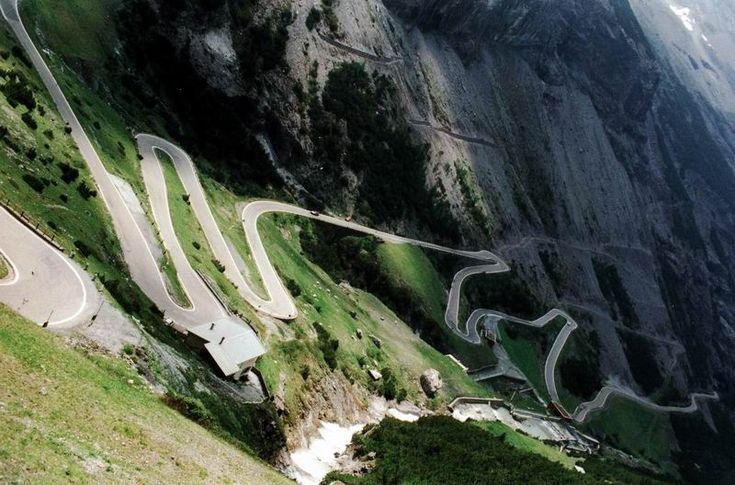If you’re a lover of challenging roads and spectacular views, you can’t miss exploring Passo di Gavia in the majestic Italian Alps. Known for its unparalleled natural beauty and thrillingly dangerous curves, this mountain pass is a challenge for any intrepid driver or brave cyclist. Passo di Gavia is located in the Lombardy region in northern Italy, near the border with Switzerland. At an altitude of approximately 2,621 meters above sea level, this pass is one of the highest routes in the Alps. Stretching about 16 kilometers long, this stretch of road offers a unique experience for cycling enthusiasts and drivers alike. With maximum gradients reaching 16%, every turn offers a new dose of excitement and adrenaline.
| Location | Lombardia, Italy |
| Municipalities | Ponte di Legno and Valfurva |
| Elevation | 2.621 mt (8.599 ft) |
| Máximum gradient | 16% |
| Lenght | 17.3 kilometers (10.75 miles) |
| Closed | Octuber to May |

Passo di Gavia
Location
Gavia is situated north of the imposing Mount Gavia, accessible by car via the picturesque State Road 300. This high-altitude journey offers spectacular panoramic views from Bormio to Ponte di Legno, passing through the charming village of Santa Caterina di Valfurva in the Alta Valtellina.
Throughout the year, vehicle traffic is sparse due to the winding road, its narrowness, steep gradients, and limited protections, while in winter, the route experiences closures due to snowfall covering the heights, from late autumn to spring. In contrast, during the summer, Passo di Gavia becomes a coveted destination for cyclists and motorcyclists from across Europe seeking exciting challenges and stunning alpine landscapes.
Just two kilometers before reaching the pass, you’ll find the Arnaldo Berni refuge, named in honor of the homonymous captain who lost his life during World War I on the Dosegù glacier, trapped in an ice tunnel beneath the majestic Punta S.Matteo.
History in the Giro d’Italia

Passage through Gavia in the 1988 Giro when an unexpected snowstorm made the stage epic
| Year | Stage | Winner |
|---|---|---|
| 2014 | Stage 16 | Robinson Eduardo Chalapud |
| 2010 | Stage 20 | Johann Tschoppt |
| 2008 | Stage 20 | Julio Alberto Perez |
| 2006 | Stage 20 | Juan Manuel Garate |
| 2004 | Stage 18 | Vladimir Miholjevic |
| 2000 | Stage 14 | Chepe González |
| 1999 | Stage 21 | Chepe González |
| 1996 | Stage 21 | Hernan Buenahora |
| 1988 | Stage 14 | Johan Van der Velde |
| 1960 | Stage 22 | Imerio Massignan |
Passo di Gavia has left an indelible mark on cycling history as one of the toughest and most emblematic passes of the Giro d’Italia. In 1988, this route became the scene of one of the most legendary stages in Giro history. Under extreme weather conditions, including torrential snowfall, cyclists battled the elements to conquer this Alpine colossus. Andy Hampsten’s eventual victory in this stage has become a legendary feat in the cycling world, showcasing the true epic nature of Passo di Gavia.
Tips for Exploring Passo di Gavia
If you venture to conquer Passo di Gavia, make sure you’re prepared for changing conditions and challenging gradients. Bring appropriate clothing for extremely cold conditions and check road conditions before embarking on the journey. Additionally, be sure to stop and enjoy the breathtaking panoramic views offered by this unique alpine landscape. In conclusion, Passo di Gavia is much more than just a mountain road; it’s an exciting challenge and an unforgettable experience for those who dare to explore its curves and gradients. With its legendary history and unparalleled natural beauty, this mountain pass deserves a place on the wishlist of any adventurer seeking extreme thrills.

Panoramic view from the top, photo by Walter Micheletti
History of Passo di Gavia

The Alpine Shelter of Passo di Gavia
The ancient medieval road that crossed Passo di Gavia underwent a crucial transformation during World War I. During that period, due to its proximity to the front, it underwent significant expansion and renovation, acquiring fundamental strategic relevance. However, despite its importance, the route remained unpaved, narrow, and extremely dangerous. It was only from the second half of the 20th century that significant improvements were made, including the construction of a tunnel to bypass the most risky section and the complete paving of the entire route. These improvements have radically transformed the driving experience on this iconic alpine route, making it safer and more accessible for modern adventurers.
Gavia Pass, featured photo by Michael Blann













